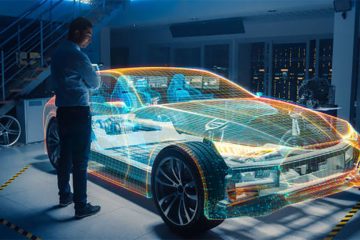Comprehensive Guide to Automotive Software Development

Over the last few decades, technology has witnessed exponential growth, drastically transforming a myriad of sectors. One industry that stands out in this transformative tide is the automotive industry. Here, automotive software development plays a pivotal role. This specialized process refers to the design, creation, implementation, and regular maintenance of various software applications embedded in vehicles. The scope of these applications is incredibly wide, ranging from basic functionalities such as controlling headlights to highly complex features like self-driving capabilities. Without a doubt, the role of software in automotive systems has become absolutely vital to not just enhancing the driving experience but also improving vehicle safety and efficiency.

The Evolution of Automotive Software
Looking back at the history of automotive software, the first inklings of software use in vehicles were largely simplistic and catered mainly to managing the engine and its basic functionalities. However, as digitalization began to penetrate the automotive industry, there was a significant expansion in the complexity and the role of automotive software. This evolution was largely driven by consumers’ growing expectations for improved performance, superior fuel efficiency, enhanced safety provisions, and overall, a seamless driving experience. Consequently, automotive software transitioned from being a supporting element to a core component of modern vehicles.
Key Components of Automotive Software
Automotive software systems can be broadly compartmentalized into three principal categories: engine control units (ECUs), infotainment systems, and safety and driver assistance systems. ECUs essentially act as the vehicle’s brain, regulating the engine and associated systems, such as fuel injection and ignition timing. Infotainment systems, on the other hand, cater to the human aspect of driving, offering a variety of entertainment and information services to enhance the user’s experience. Lastly, safety and driver assistance systems utilize complex software algorithms to reduce the risk of accidents and ease the burden of driving. These include functionalities like adaptive cruise control and collision prevention systems.
Software Development Methodologies in Automotive
Depending on the project’s complexity and unique requirements, the software development process in the automotive industry follows specific methodologies. Among these, the Waterfall and Agile methodologies are particularly popular. The Waterfall methodology adopts a linear, sequential approach where each phase of development follows in a strict order. In contrast, the Agile methodology promotes an iterative and incremental development model, thereby allowing for greater flexibility and adaptability to changes and evolving requirements.
Impact of Automotive Software on Vehicle Performance
The role of automotive software extends beyond the hood to almost every aspect of vehicle performance. It’s not just about optimizing the engine’s efficiency but also about enriching the driving experience. Advanced driver-assistance systems (ADAS), which heavily rely on software, provide safety features like automatic braking, lane-keeping assist, and adaptive cruise control. These functionalities can drastically improve the safety and comfort of driving. However, software is only a part of the equation. Proper vehicle maintenance, such as using the best grease for ball joints (discussed in depth in another one of our articles), also contributes significantly to the performance and longevity of a vehicle.
Latest Trends in Automotive Software Development
The landscape of automotive software development is continually evolving, influenced by modern trends like the Internet of Things (IoT), Artificial Intelligence (AI), and autonomous driving. The amalgamation of these cutting-edge technologies with automotive software is pushing the boundaries of innovation, leading to the development of vehicles that are not just smarter, but also safer and more efficient. For instance, AI can facilitate predictive maintenance, while IoT enables seamless connectivity between vehicles and their environment.
Challenges and Solutions in Automotive Software Development
Despite the numerous benefits and potential that automotive software development offers, it also faces several significant challenges. These include pressing issues related to cybersecurity, regulatory compliance, interoperability, and the sheer complexity of automotive software. However, automakers and software developers are far from deterred. In fact, they are investing heavily in research and development, looking for innovative solutions such as robust security measures, standardization of protocols, and over-the-air (OTA) updates to keep up with these challenges.
Future Outlook: Autonomous and Connected Cars
Looking towards the horizon, the future of automotive software development is expected to be dominated by autonomous and connected cars. Rapid advancements in AI, machine learning, and sensor technology are paving the way for vehicles that can navigate through traffic and respond to real-world conditions without human intervention. Furthermore, the development of Vehicle-to-Everything (V2X) communication technologies presents an exciting new frontier for automotive software, enabling cars to interact with their surroundings in ways never thought possible. This progressive trend not only promises an unprecedented driving experience but also opens up a multitude of opportunities for software developers and automakers.
Conclusion
In summing up, it’s clear that automotive software development has fundamentally reshaped the landscape of the automobile industry. What was once a mechanical field dominated by nuts and bolts has evolved into a complex interplay of software and hardware. This seismic shift has not just changed the way vehicles are designed, manufactured, and maintained, but it has also redefined the very essence of driving. As we venture deeper into this digital era, one thing is certain: automotive software development will continue to play a key role in steering the future of mobility.


